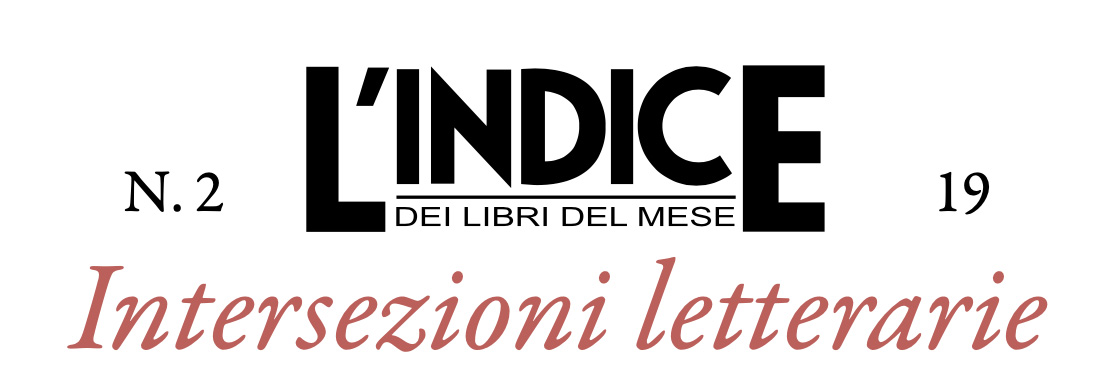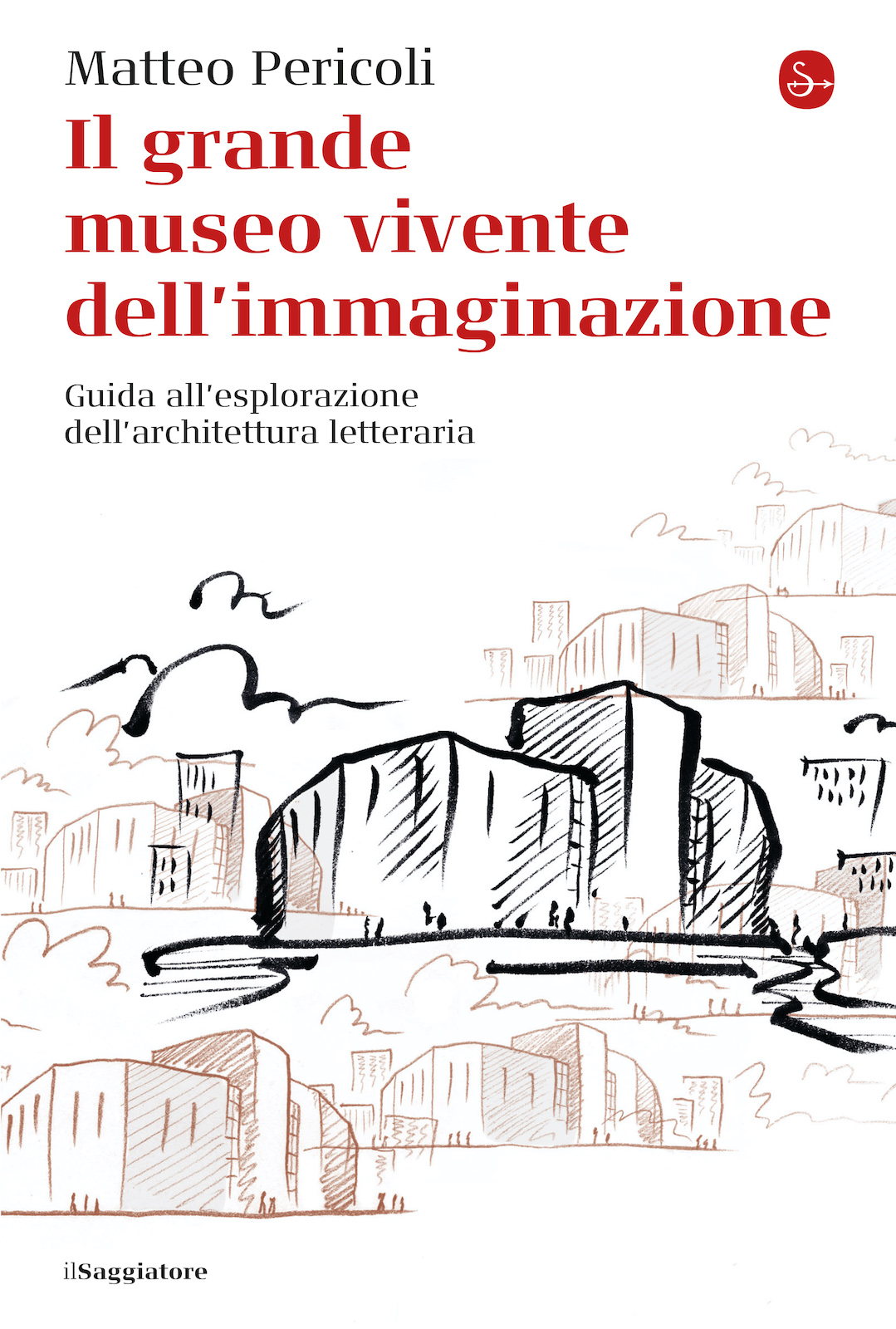Stories to inhabit

Literary Intersections
Matteo Pericoli
THE GREAT LIVING MUSEUM OF THE IMAGINATION
A Guide to the Exploration of Literary Architecture
pp. 166, € 25, il Saggiatore, Milano 2022
by Luigi Marfè
“If the architecture of a novel were a building,” asks Matteo Pericoli in The Great Living Museum of the Imagination, “what shape would it take?” After Finestre su New York (il Saggiatore, 2019) and Finestre sull’altrove (il Saggiatore, 2021), in this new book the author questions, through the exploration of a series of spatial metaphors, the visible forms of narrative creativity: that “clear impression,” as we read, “of feeling immersed in a kind of construction that has its own functioning and structure.” After all, literary theories have often used architectural imagery to describe compositional processes, from the method of loci of classical rhetoric to the constructive functions of formalism. “The house of fiction has many windows, but only two or three doors,” James Wood wrote more recently in How Fiction Works (2008). An architect, writer and illustrator, Pericoli is convinced that metaphors like this are not just abstract formulations, but on the contrary capture deep elements of the cognitive processes by which the mind imagines narrative universes. Each story, in his view, can be understood as a kind of space to be explored: “there are no stories that cannot be inhabited and inspected from within.”
 The Great Living Museum of the Imagination is designed as a walk-through, a visit to an ideal museum about the creativity of architects and writers. “This is not just another book. It is a building,” the author writes: instead of different parts there are floors, instead of chapters as many rooms. Enriched with images, maps and photographs, the book is an iconotext, aiming to re-accustom the reader’s gaze to the observation of physical and mental spaces. Pericoli reflects on the relationship between narrative composition and architectural design, gives a visual reading of some narrative classics, and offers exercises in narrative creativity. Like the imagination of writers, the imagination of architects, he seems to suggest, does not follow objective rules, but is the result of subjective perceptions and intuitions. If there are “stories-that-are-spaces,” there are also “spaces-that-are-stories,” and orienting oneself in the world means trying to turn its pages: walking through a city, “we intuitively read paths, we are attracted by sudden, wide empty spaces, or by the light streaming in from the ceiling, or by a huge window.” The legibility of space is what allows the architect to give it form, composing the narrative surface on which to exercise his design: “The envelope of space is nothing more than the set of all those words, paragraphs and chapters, expressed in the language of architecture and used to articulate ideas, concepts, stories and aspirations.”
The Great Living Museum of the Imagination is designed as a walk-through, a visit to an ideal museum about the creativity of architects and writers. “This is not just another book. It is a building,” the author writes: instead of different parts there are floors, instead of chapters as many rooms. Enriched with images, maps and photographs, the book is an iconotext, aiming to re-accustom the reader’s gaze to the observation of physical and mental spaces. Pericoli reflects on the relationship between narrative composition and architectural design, gives a visual reading of some narrative classics, and offers exercises in narrative creativity. Like the imagination of writers, the imagination of architects, he seems to suggest, does not follow objective rules, but is the result of subjective perceptions and intuitions. If there are “stories-that-are-spaces,” there are also “spaces-that-are-stories,” and orienting oneself in the world means trying to turn its pages: walking through a city, “we intuitively read paths, we are attracted by sudden, wide empty spaces, or by the light streaming in from the ceiling, or by a huge window.” The legibility of space is what allows the architect to give it form, composing the narrative surface on which to exercise his design: “The envelope of space is nothing more than the set of all those words, paragraphs and chapters, expressed in the language of architecture and used to articulate ideas, concepts, stories and aspirations.”
Every architect “tells a story.” Unlike those of writers, however, it is not configured as a “concatenation of events,” but of “spaces”: it is therefore an “architectural plot,” a “spatial narrative.” If architects have always fed on the imagery of writers, on the contrary the latter have sought in architecture a way to give visibility to their own narratives. Reading The Great Living Museum of the Imagination brings to mind Gaston Bachelard’s poetics of space, whereby words could be considered as “little houses” that the writer finds himself inhabiting, exploring, furnishing: “To climb the stairs of the house of the word means, from step to step, to abstract,” Bachelard wrote, “To descend into the cellar, means to dream, to lose oneself in the remote corridors of an uncertain etymology, means to search in words for unobtainable treasures.”
The “literary architectures” outlined by Pericoli concern works by Calvino, Ernaux, Vonnegut, Dürrenmatt, Conrad, Carrère, Saer, Ferrante, Tanizaki, Dostoevsky, Faulkner, and Fenoglio. His book is presented as an exercise in “arch-criticism,” if one can call it that, seeking in each text the visible form that best describes it. Pericoli is convinced that narrative imagination does not feed only on words: “There are in fact other thoughts – let’s call them intuitions – often made up of imagination or visualizations that are neither verbal nor causally produced by the reasoning we do.” Visual metaphors can be a gateway to this different dimension of creativity: “very often these thoughts or associations are triggered by metaphors which, if they work as such, are real engines of imagination and creativity that, literally, transport us elsewhere.”
Luigi Marfè teaches literary criticism and comparative literature at the University of Padua


